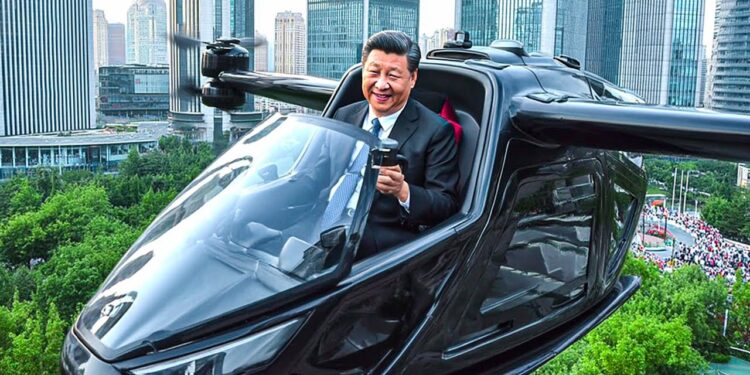The XPeng X2, developed by XPeng AeroHT, a subsidiary of the Chinese electric vehicle company XPeng, is a groundbreaking electric vertical takeoff and landing (eVTOL) aircraft designed to transform urban mobility. Capable of flying for 25 minutes at a maximum speed of 130 km/h (80 mph), the X2 is a two-seater vehicle that resembles a large drone, with a teardrop-shaped design for improved aerodynamics. Measuring 16.97 ft long, 16.81 ft wide, and 4.47 ft high, it weighs 680 kg and can carry a 160 kg payload, including passengers and luggage. Constructed with aeronautical aluminum and carbon fiber, it features eight rotors for balanced flight and enhanced safety, with backup systems to ensure stability if one rotor fails. The X2 supports both manual and autonomous flight modes, leveraging 4G/5G connectivity for real-time updates and communication. It fits in a standard garage or parking space and can be moved on dollies for easy ground handling.
Safety features include distributed electric propulsion, environmental sensors, 360° cameras, real-time video streaming, ground-based monitoring, and an emergency parachute. As an electric vehicle, it produces zero emissions, offering a cleaner alternative for urban transport in polluted cities. The X2 is primarily designed as an air taxi, with potential uses in sightseeing, medical transport, and short city trips, flying at heights around 300 ft but capable of reaching 3,200 ft.
In 2022, XPeng conducted a high-profile public test flight in Dubai, approved by the Dubai Civil Aviation Authority, showcasing the X2’s capabilities in front of global press and officials. In 2023, it became the first manned eVTOL licensed for flight in China by the Civil Aviation Administration of China, a milestone in the country’s push for a “low-altitude economy.” This emerging sector, encompassing drones and air taxis operating below 1,000 meters, is projected to reach a market value of 3.5 trillion yuan by 2035, driven by advancements in AI, improved human-computer interaction, and supportive regulations.
XPeng AeroHT also introduced the “land aircraft carrier” in 2024, a dual-mode system combining a six-wheeled, extended-range electric vehicle (5.5 m long, 2 m wide, 2 m tall) with a detachable eVTOL module. The ground vehicle, powered by an 800V platform, acts as a generator to charge the air module, which can perform 5–6 short flights after an 18-minute charge (30–80%). The air module, with foldable rotors, supports manual or autonomous operation and is designed for emergency scenarios like medical rescues or evacuations. Production is slated for 2026, with over 3,100 pre-orders and an estimated cost below $300,000, a competitive price for such advanced technology.
The X2 and land aircraft carrier represent XPeng’s vision for advanced air mobility (AAM), blending air and ground travel to bypass urban congestion. While challenges like air traffic regulations, infrastructure, and public acceptance remain, these innovations signal a shift toward a future where flying vehicles could redefine city landscapes. China’s rapid progress in the low-altitude economy, alongside global competitors like Lilium, positions XPeng as a leader in this transformative industry.






















